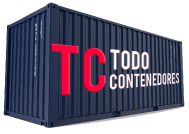
We are currently drawing near the terminus of one of the most relevant regulations that came across the shipping activity, the MRV process.
After the year 2018, in which the companies actively monitored and registered the vessel’s activity data (distance in voyages between EU ports of call, cargo carried, hours at sea and transport work), fuel consumed on-board and CO2 emissions produced by several emission sources, this information was sent to an accredited verifier by the form of the vessel’s Emissions Report.
DOC – Document of Compliance
This Emissions Report is reported in the THETIS MRV platform created by EMSA and is to be verified until 30th April 2019. In order to guarantee a satisfactory result, the company has to assure that all sent data is without any misstatement or non-conformity, which as to be checked by an independent MRV verifier through a number of techniques such as regular crosschecks of the information, calculations and recalculations or auditing crew members during onboard visits. Annual basis monitoring results are published in the platform, as well as per-voyage monitoring and port activity.
If without any doubt, it is concluded that the Emissions Report is in conformity with EU MRV regulations (EU 757/2015 and EU 2072/2016), the company submits the verified Emissions Report to the European Commission and Flag State. The Verifier fills in the THETIS – MRV portal the Verification report with all conclusions and descriptive elements and issues a Document of Compliance (DOC) for the vessel concerned.
The DOC shall be valid for the period of 18 months after the end of the reporting period. The independent Verifier informs the European Commission and the authority of the flag State, of the issuance of Document of Compliance through the THETIS-MRV portal.
By the 30th June of the year following the end of a reporting period, vessels arriving at, within or departing from a port under the jurisdiction of a Member State, and which have carried out voyages during that reporting period, shall carry on board a valid DOC. For vessels that failed to comply with the monitoring and reporting requirements for two or more consecutive reporting periods, the competent authority of the Member State of the port of entry may issue an expulsion order which shall be notified to the Commission, EMSA, the other Member States and the flag State concerned.
This document has significant importance since it represents a conclusion step for this most relevant regulation, being a declaration to the authorities that the vessel fulfils all its legal obligations concerning MRV. It has to be kept on board and presented whenever requested at an EU Port entry, as evidence, for the previous monitoring period.
The MRV cycle
TecnoVeritas – ICE (department for the verification of Greenhouse Gases emissions on maritime industry), is a recognized independent verifier by EMSA, and has concluded in the past month of April the Verification of the Emissions Report of container ships with more than 5000 GT from the biggest Portuguese container fleet (Transinsular – Transportes Marítimos, SA), issuing a DoC for each case that proves it was satisfactory and in conformity with the regulations.
This particular MRV cycle has reached a conclusion for the reporting period of 2018, although until the transition to IMO-DCS is fully completed, both frameworks will act in parallel in the following years. The process will be repeated and companies will continue monitoring data for the following monitoring periods, having to verify the vessel’s Emissions Report and update the DoC when it expires for any reason if the company requires any change in the vessels monitoring plan, in which case it is being necessary to be assessed by the MRV independent verifier.
The Commission shall evaluate every two years the overall impact of the maritime transport sector on the global climate, including those not related to CO2 emissions, or their effects. Another conclusion that might derive from this EU collected data may be the creation of a Carbon Trading Market for the Shipping activity. It is interesting to see, for example, that, at the present moment, a ton of CO2 is around 27.17 Euros (Official Close 4/23/2019 MI Indication), although the tendency is to increase in the following years as it can be seen in Figure 1.
Source: TecnoVeritas


Comentarios recientes